Horizontal gene transfer (HGT), also known as lateral gene transfer, is the transfer of genetic information between more or less distantly related organisms. It is different from vertical gene transfer, which involves the transfer of genetic material from parents to their offspring.
HGT contributes to the genetic, physiological, and ecological characteristics of the host organisms. The exchange of genetic material can have both positive and negative consequences on biological systems.
The occurrence of HGT is more likely between organisms that are in close proximity to each other, as their genomes have greater contact. HGT is more commonly observed among prokaryotes, mainly within groups of bacteria, but it can also happen in plants, animals, and other eukaryotes.
Read Also: Prokaryotes vs. Eukaryotes (47 Key Differences)
It is important to understand the different mechanisms by which HGT occurs. These mechanisms vary from the transfer of genetic material through transformation, conjugation, transduction, extracellular vesicles, and nanotubes in prokaryotes to the exchange of apoptotic bodies and cell-free DNA in eukaryotes.
Interesting Science Videos
Horizontal Gene Transfer in Prokaryotes
Horizontal Gene Transfer (HGT) mechanisms in prokaryotes involve three main processes: transformation, conjugation, and transduction.
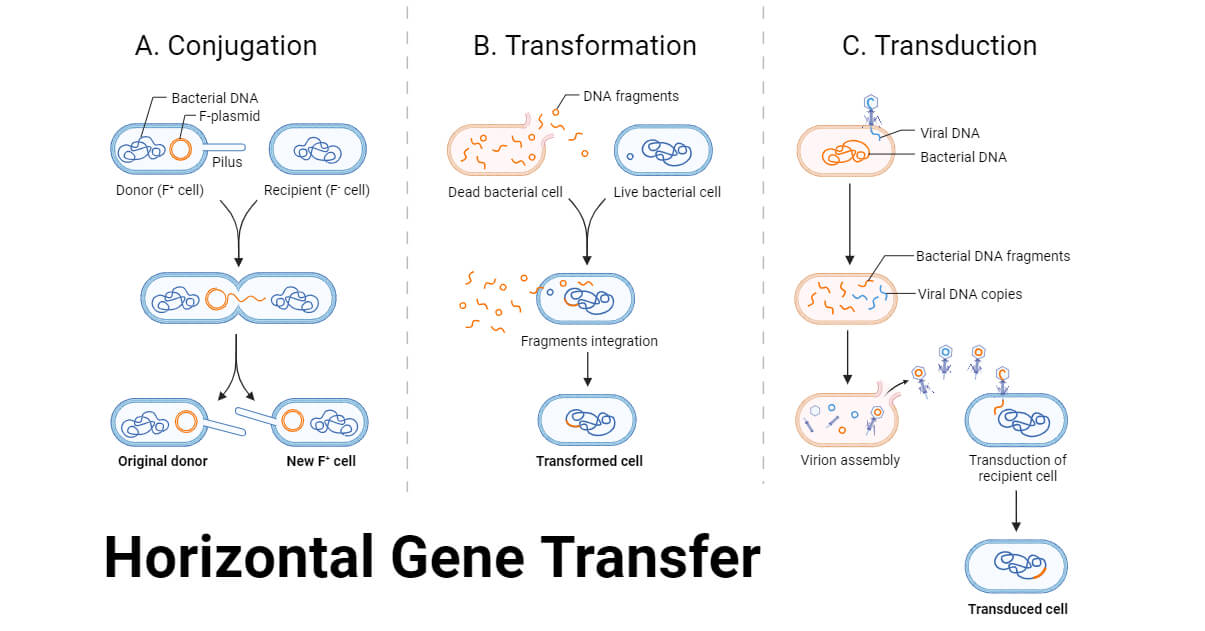
Transformation
- Transformation is a process of genetic exchange in prokaryotes that involves the uptake and exchange of DNA fragments between a donor and a recipient.
- In transformation, a competent recipient can take up DNA fragments from a dead or degraded donor. This allows them to exchange genetic material with other cells of the same species or different species.
- Frederick Griffith discovered transformation in 1928 while studying Streptococcus pneumoniae bacteria.
- Griffith found that injecting mice with a mixture of heat-killed Type III S pneumococci (virulent) and live Type II R pneumococci (avirulent) caused the mice to develop pneumonia and led to the recovery of live Type III S cells.
- The transformation of avirulent Type II R cells into virulent Type III S cells suggested the exchange of genetic material.
- Griffith’s experiment showed that harmless bacteria could transform into harmful ones when mixed with heat-killed harmful bacteria. This finding helped to understand how bacteria can acquire new traits through the exchange of genetic material.
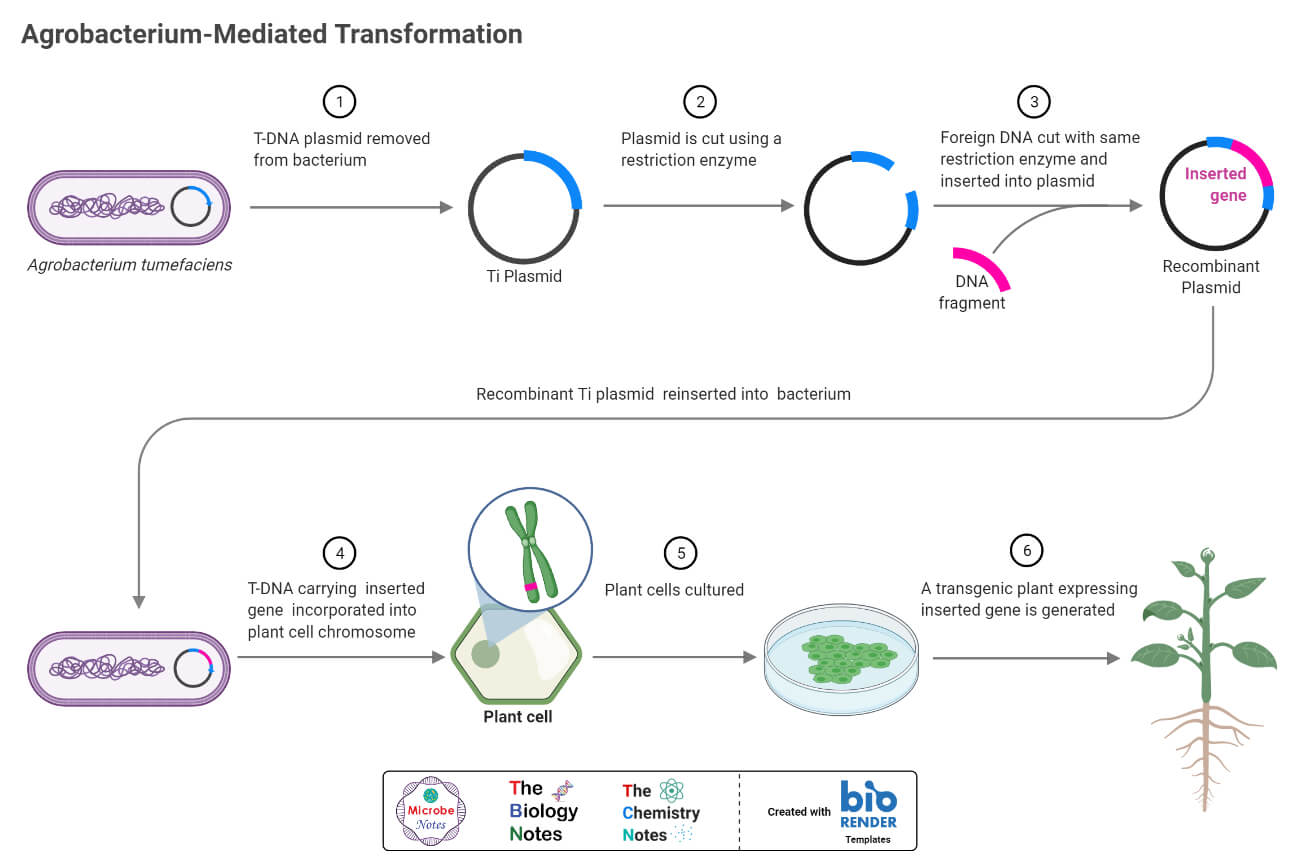
Conjugation
- Conjugation is a method of genetic exchange where a donor bacterium transfers DNA to a recipient bacterium through direct cell contact.
- It was first discovered in 1946 by Edward Tatum and Joshua Lederberg. They found that bacteria can transfer DNA through a unidirectional transfer mechanism using a genetic element called the F factor or plasmid.
- Conjugation involves various types of conjugative elements such as plasmids, conjugative transposons, and integrative conjugative elements.
- Conjugation occurs through a conjugation pilus. The pilus of the donor bacterium binds to the recipient bacterium, and membrane proteins form a bridge between them. The DNA on the conjugative plasmid is cut at the origin of the transfer site (oriT), and the nicked strand enters the recipient bacterium while the other strand remains in the donor.
- F+ conjugation involves the transfer of an F+ plasmid from a donor to a recipient bacterium. The F+ plasmid carries genes (tra genes) responsible for pilus formation and mating pair formation.
- Hfr conjugation occurs when an F+ plasmid integrates into the bacterial chromosome, forming an Hfr bacterium.
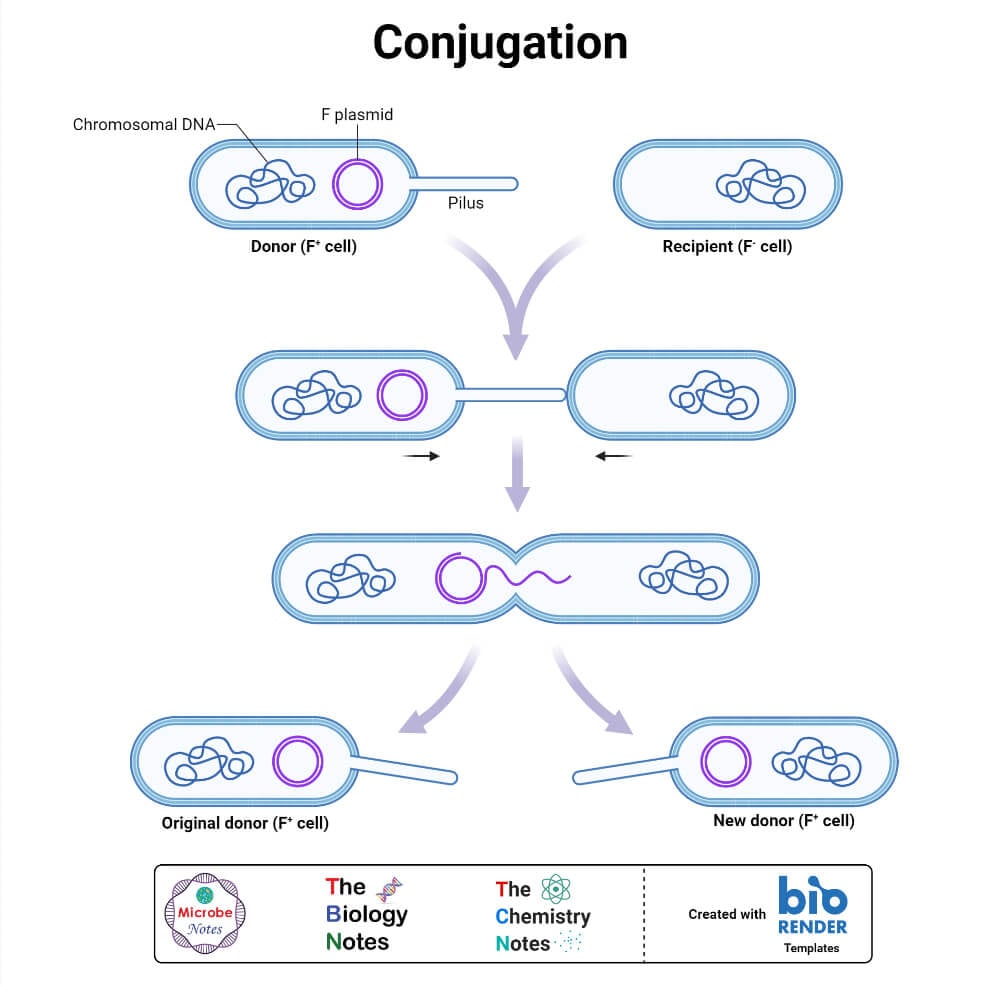
Transduction
- Transduction is a process in which a bacteriophage, a virus that infects bacteria, transfers a DNA fragment from one bacterium to another.
- The discovery of transduction was made by Norton Zinder and Joshua Lederberg in 1952 while studying bacteriophage P22. They observed that bacteriophages could carry genes from one bacterium to another, leading to the exchange of genetic material.
- Transduction can be classified into two types: generalized transduction and specialized transduction.
- Generalized transduction is a type of transduction where bacteriophages can transfer any bacterial gene from one cell to another. Generalized transduction involves the transfer of random fragments of bacterial DNA. The DNA fragment is packaged into the phage head instead of the phage genome. When the phage infects another bacterium, this bacterial DNA fragment can be transferred and integrated into the recipient bacterium’s chromosome through recombination. Examples of generalized transducing phages are P22 in Salmonella typhimurium and P1 in Escherichia coli.
- Specialized transduction is characterized by the transfer of specific genes between bacteria. It occurs when there is a recombination event between the host and the phage chromosome during the lysogenic life cycle of a bacteriophage. This results in the phage carrying a piece of bacterial DNA. When the phage infects another bacterium, it transfers both phage and bacterial DNA to the recipient. Bacteriophage lambda (λ) is a well-known example of a specialized transducing phage.
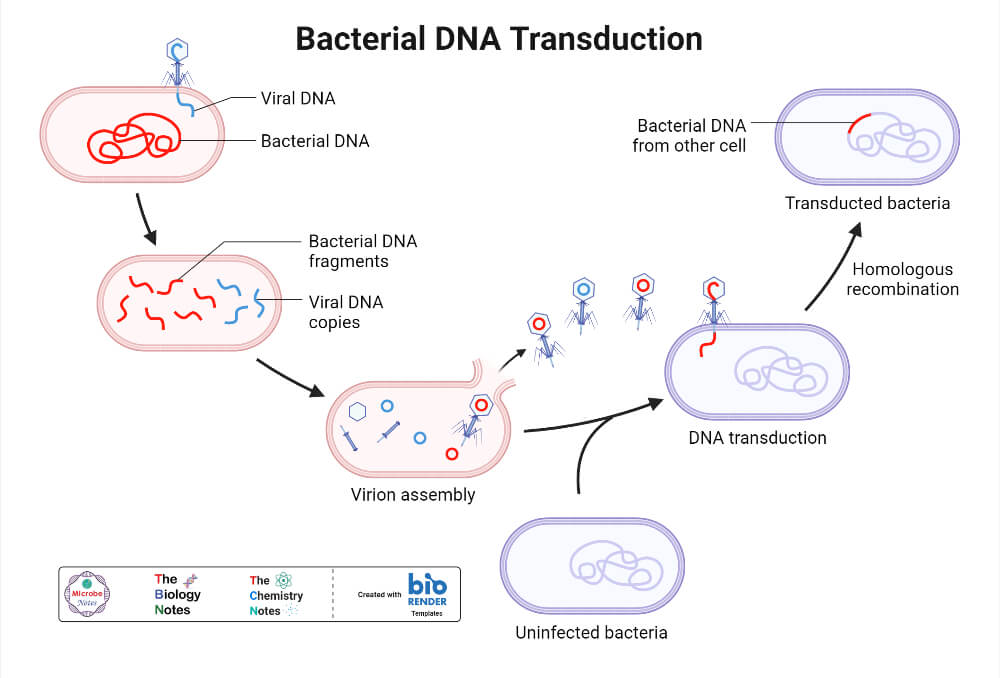
Besides these three main mechanisms of HGT, other new mediators in prokaryotes involve gene transfer agents (GTAs), nanotubes, and membrane vesicles (MVs).
- Gene transfer agents (GTAs) are bacteriophage-like particles that act as natural vectors. Some bacteria produce GTAs to transfer random fragments of their own DNA to other cells. The exchange of genes through GTAs was initially observed and studied in Rhodobacter, a type of purple non-sulfur bacteria.
- Nanotubes are intercellular structures composed of bacterial-like membranes that connect adjacent cells. They facilitate the exchange of intracellular molecules such as metabolites, proteins, mRNA, and plasmid DNA.
- Membrane vesicles or extracellular vesicles are bilayer structures released by bacteria. They can transfer biomolecules between bacteria, protecting them during the transfer process and increasing the likelihood of successful gene transfer.
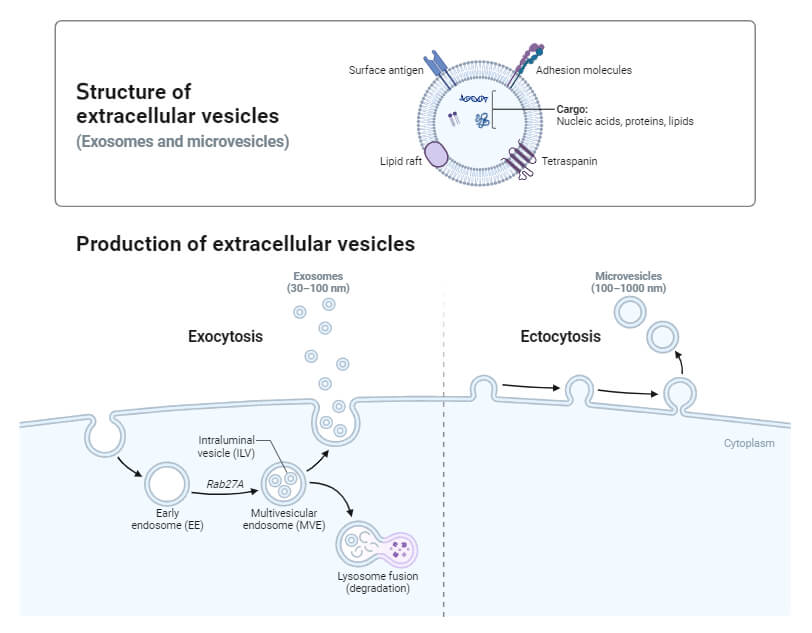
Horizontal Gene Transfer in Eukaryotes
- Horizontal Gene Transfer (HGT) is well-known in bacteria but was considered unlikely in complex eukaryotic organisms. However, more evidence of HGT has emerged in algae, fungi, plants, and animals, including vertebrates.
- In eukaryotes, HGT occurs through various mechanisms. The exact mechanisms by which this transfer occurs are not yet fully understood, but various potential mechanisms have been suggested to explain this transfer process.
- Parasites that live inside host cells can transfer genes to their hosts. One example is the transfer of genetic material between plant species facilitated by host-parasite connections. Parasites can act as vectors, transferring mitochondrial genes between different plant species.
- Transposons, also known as jumping genes or selfish DNA, are another mediator of HGT in both plants and animals. They facilitate the transmission of genetic material between species. One notable example of genetic exchange through transposon is observed in the transfer of transposons between rice and millet plants.
- Viruses can also be potential carriers for HGT. Viruses can introduce genetic material into the nucleus of host cells. Some viruses, including retroviruses, have the ability to integrate DNA into host chromosomes.
- During endogenous DNA repair processes, foreign DNA may be unintentionally incorporated into the genome.
In addition to these mechanisms, there are newly identified mediators of HGT in eukaryotes. These include apoptotic bodies, exosomes, and cell-free DNA (cfDNA). They are briefly explained below:
Apoptotic Bodies
Apoptotic bodies are small vesicles released from dying tumor cells during apoptosis. They contain DNA, RNA, and proteins, and can transfer this complex information to neighboring cells. The outer membrane of apoptotic bodies changes in a way that causes neighboring cells to become phagocytic, allowing them to engulf and internalize the apoptotic bodies. This enables the exchange of genetic information. Apoptotic bodies play a role in various biological processes and diseases. Research has also shown that apoptotic bodies can transfer oncogenic DNA to recipient cells. Additionally, apoptotic bodies have been involved in the transfer of antibiotic resistance genes and viral DNA.
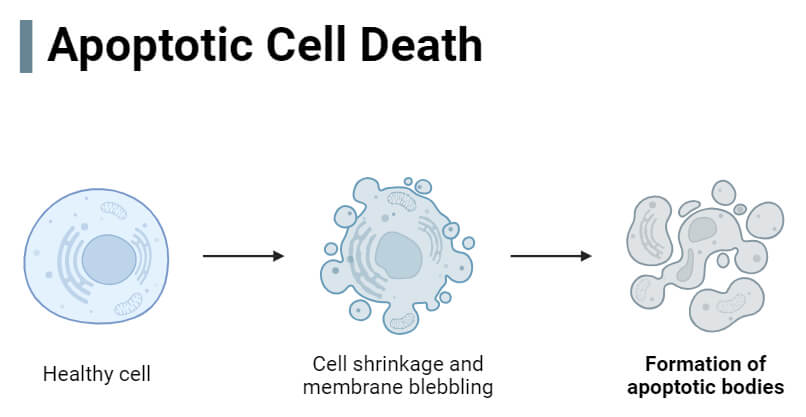
Circulating Cell-Free DNA (cfDNA)
Apart from apoptotic bodies, another mechanism of horizontal gene transfer in eukaryotes is through circulating cell-free DNA (cfDNA). cfDNA can be derived from apoptotic cells, necrotic cells, or active cellular secretion. Experiments have shown that cfDNA can cause oncogenic changes in normal cells. Studies have shown that cancer cell-derived cfDNA can be transferred to healthy cells and cause genetic alterations, potentially leading to the transformation of normal cells into cancer cells. For instance, studies on colon cancer transformation revealed that the supernatant of human cancer cells and plasma from colon cancer patients can be laterally transferred to healthy cells.
Exosome
Exosomes, which are small extracellular vesicles, are another mediator of HGT. Exosomes can transfer genomic DNA and RNA into recipient cells, integrating them into the genome and potentially impacting gene expression. Exosomes act as natural, non-toxic vectors and can be used in gene therapy as an alternative to traditional gene cloning methods, which can be time-consuming and laborious. However, while exosomes have promising applications in gene therapy, they can also have unintended consequences. For example, it can affect the therapeutic potential of gene manipulation techniques like the CRISPR-Cas9 system. During the process of DNA repair by CRISPR-Cas9, exosomes can capture foreign DNA sequences, including retrotransposons, genomic DNA, mRNA, and vectors. This unintended integration of foreign DNA into the genome can negatively impact the efficiency and specificity of CRISPR-Cas9 technology.
Significance of Horizontal Gene Transfer
- Horizontal Gene Transfer (HGT) plays an important role in the genetic diversity and adaptation of species. It allows the transfer of genetic material leading to the acquisition of new traits. This genetic diversity enhances the ability of organisms to adapt to changing environments.
- HGT has become a valuable tool in genetic engineering. It allows the selective introduction of desired changes in the genome and helps in the development of genetically modified organisms with specific traits.
- HGT can be used in artificial gene transfer techniques for therapeutic purposes, such as gene therapy.
- In agriculture, understanding HGT can enhance genetic modification methods in crops, leading to improved traits and increased yield.
- HGT contributes not only to beneficial traits but also to the emergence and recurrence of various diseases. It can transfer genes associated with diseases such as cancer, genetic disorders, metabolic disorders, and neurodegenerative diseases. Understanding the role of HGT in various diseases can help in the development of more effective treatments and diagnostic methods.
References
- 3.1: Horizontal Gene Transfer in Bacteria – Biology LibreTexts
- Burmeister, A. R. (2015). Horizontal Gene Transfer. Evolution, Medicine, and Public Health, 2015(1), 193-194. https://doi.org/10.1093/emph/eov018
- Emamalipour, M., Seidi, K., Zununi Vahed, S., Jaymand, M., Majdi, H., Amoozgar, Z., Chitkushev, L. T., Javaheri, T., & Zare, P. (2020). Horizontal Gene Transfer: From Evolutionary Flexibility to Disease Progression. Frontiers in Cell and Developmental Biology, 8, 507646. https://doi.org/10.3389/fcell.2020.00229
- Griffiths, A. J. F., Miller, J. H., Suzuki, D. T., Lewontin, R. C., Gelbart, W. M. (2000). An introduction to genetic analysis (7th ed.). New York: W. H. Freeman.
- Heuer, H., & Smalla, K. (2007). Horizontal gene transfer between bacteria. Environmental Biosafety Research, 6(1-2), 3–13. doi:10.1051/ebr:2007034
- https://www.the-scientist.com/features/horizontal-gene-transfer-happens-more-often-than-anyone-thought-70118
- Keeling, P. J., & Palmer, J. D. (2008). Horizontal gene transfer in eukaryotic evolution. Nature Reviews Genetics, 9(8), 605-618. https://doi.org/10.1038/nrg2386
- Virolle, C., Goldlust, K., Djermoun, S., Bigot, S., & Lesterlin, C. (2020). Plasmid Transfer by Conjugation in Gram-Negative Bacteria: From the Cellular to the Community Level. Genes, 11(11). https://doi.org/10.3390/genes11111239
- Yutin, N. (2013). Horizontal Gene Transfer. Brenner’s Encyclopedia of Genetics, 530–532. doi:10.1016/b978-0-12-374984-0.00735-x
